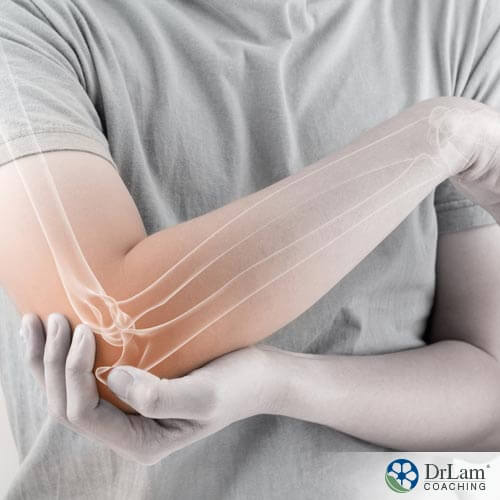Preventing osteoarthritis is now no longer impossible. Yes, you have heard it right! This painful degenerative joint disease which was assumed to be a part and parcel of the natural aging process can now be controlled. New findings have linked osteoarthritis to altered metabolism. Estimates reveal that 27 million Americans over the age of 25 suffer from the condition and the number is expected to increase in the future. Experts’ review reveals how making certain changes in lifestyle can prove potentially helpful in preventing osteoarthritis.
 Osteoarthritis is the most common type of arthritis in which the protective cartilage around the bone joints gradually degenerates resulting in swelling and pain. The joints of the hands, spine, hips, and knees are most affected. The symptoms of osteoarthritis often develop slowly which can worsen with time.
Osteoarthritis is the most common type of arthritis in which the protective cartilage around the bone joints gradually degenerates resulting in swelling and pain. The joints of the hands, spine, hips, and knees are most affected. The symptoms of osteoarthritis often develop slowly which can worsen with time.
Symptoms of osteoarthritis include
The symptoms can worsen with time making everyday tasks difficult to execute. Severe joint pain can restrict movement so that people cannot walk or move around. Due to the painful symptoms and conditions, preventing osteoarthritis in the first place is always recommended. Old age, obesity, joint injury, prolonged stress on joints, bone deformities, and genetics are some of the risk factors that contribute to osteoarthritis.
Until now, researchers thought that aging and osteoarthritis go hand in hand. New findings suggest that a healthy diet and exercise can help in preventing osteoarthritis. To have a deeper insight into how metabolism affects osteoarthritis, researchers in England worked in this area. It was revealed that a poor diet and sedentary lifestyle have the ability to alter metabolism which could totally change the functioning of cells. These genetic changes in cells caused significant alteration in the way they produced the energy required for body functions. Researchers observed that such alterations exerted stress on the cells compelling glucose production. When the extra glucose was left behind in the body as unused energy, it converted into lactic acid.
The human body is not designed to handle lactic acid. Therefore, it faces difficulty in processing and eliminating it. Increase in lactic acid levels in the body inflames tissues. When the tissues in your body, especially those around the cartilage of joints, get inflamed, it leads to the pain and swelling associated with osteoarthritis.
 Researchers believe that understanding the reason for the metabolic changes can prove significantly helpful in controlling and preventing osteoarthritis. Though medications provide relief to a certain extent, adopting a healthy lifestyle and diet serves a holistic approach to preventing and correcting the condition. Ali Mobasheri, the lead author of the review, states that until now, osteoarthritis has been assumed to be a part of the aging process. However, new findings reveal that it is now possible to prevent the onset of this painful, debilitating condition. This suggests that a healthy diet and lifestyle possess the ability to impact well-being, as well as to alter the metabolic behavior of the cells, tissues, and organs which can lead to serious illnesses.
Researchers believe that understanding the reason for the metabolic changes can prove significantly helpful in controlling and preventing osteoarthritis. Though medications provide relief to a certain extent, adopting a healthy lifestyle and diet serves a holistic approach to preventing and correcting the condition. Ali Mobasheri, the lead author of the review, states that until now, osteoarthritis has been assumed to be a part of the aging process. However, new findings reveal that it is now possible to prevent the onset of this painful, debilitating condition. This suggests that a healthy diet and lifestyle possess the ability to impact well-being, as well as to alter the metabolic behavior of the cells, tissues, and organs which can lead to serious illnesses.
Stress is the major contributing factor to numerous diseases including osteoarthritis. With excess stress, there is an imbalance in the anti-stress hormone cortisol which can lead to inflammation, thus increasing the risk of developing painful joints and osteoarthritis. The NeuroEndoMetabolic (NEM) Stress Response system springs into action during stressful situations to fight against stress. It is a complicated system of various organs and six circuits which function in close coordination. During stress, the hypothalamic-pituitary-adrenal (HPA) axis signals your adrenal glands to secrete the anti-stress hormone cortisol. However, consistent stress leaves your adrenals overburdened, decreasing the secretion of cortisol. This reduces your body’s natural stress-fighting ability which can lead to adrenal fatigue.
It is important to note that adrenal fatigue and osteoarthritis are interrelated. Osteoarthritis can exert additional stress on your body which can further worsen AFS symptoms. Cortisol helps fight inflammation, thus reducing joint pain and preventing osteoarthritis. However, in adrenal fatigue, cortisol level is low which raises the risk of inflammation and increase in joint pain. In such cases, an adrenal fatigue therapist can help in dealing with the condition effectively as traditional physicians fail to recognize the link between adrenal fatigue and joint pain.
Making certain alterations in lifestyle can help prevent osteoarthritis, as well as provide relief from pain in people who already have the problem. Consider eating fresh vegetables, whole fruits, natural probiotic foods, healthy fats, and foods rich in omega-3 fatty acids for the healthy functioning of joints. Staying active, eating a nutritious healthy diet, managing stress, and trying acupuncture, heat/cold application, massage, and moderate exposure to sunlight after a massage can help to keep your joints healthy, thereby preventing osteoarthritis or slowing down its progression.
Here are some steps that can help relieve the pain of osteoarthritis:
Eating inflammatory foods can raise the risk of joint pain. Soda, baked sweets, candy, packaged snack bars, palm oil, refined flour, artificial sweeteners, and processed foods can increase inflammation in your body, raising the risk of several diseases including joint pain. Those with osteoarthritis should consider removing inflammatory foods from their diet to prevent the pain from worsening.
 Painful stiff joints can restrict movement. Stretching, yoga, and moderate exercise are effective natural remedies to prevent joint pain. Exercising helps you stay active, enhances the flexibility of the joints, improves blood circulation, strengthens muscles, lowers inflammation, reduces stress level, improves mood, and supports a healthy body weight.
Painful stiff joints can restrict movement. Stretching, yoga, and moderate exercise are effective natural remedies to prevent joint pain. Exercising helps you stay active, enhances the flexibility of the joints, improves blood circulation, strengthens muscles, lowers inflammation, reduces stress level, improves mood, and supports a healthy body weight.
Diet is an important factor for maintaining a healthy body and mind. Including anti-inflammatory foods in your diet can significantly help fight inflammation and promote bone health. Anti-inflammatory foods are rich in essential antioxidants, fatty acids, minerals, and vitamins which support healthy tissues, bone formation, and the immune system. Consider including fresh fruits, vegetables, healthy fats, whole grains, legumes, and natural probiotic foods in your diet.
Getting enough relaxation is important to keep your body healthy. Constant stress can cause cortisol imbalance in your body triggering inflammation. Make sure to get adequate sleep. Getting enough sleep helps your body to fight stress, repair damaged tissues, regulate appetite, and keep the stress hormones balanced.
Dealing with joint pain can be stressful. Acupuncture, massage, reflexology, heat application, and moderate exposure to sunlight are some of the natural remedies that can help ease joint stiffness, and reduce pain and swelling.
Osteoarthritis is a painful condition in which the protective cartilage around the joints degenerates. During the condition, the joints become swollen, stiff, tender, and painful which restricts normal movement. Formation of bone spurs and gratings of the joints can also be found. The symptoms appear slowly which worsen with time. Osteoarthritis was assumed to be a natural part of the aging process. But new findings reveal that osteoarthritis can be controlled by altering metabolism. Eating healthy foods, regular exercise, managing stress, yoga, and a healthy lifestyle are the ultimate path to preventing osteoarthritis, improving joint function, hindering the progression of the disease, and ensuring health and well-being.
Diet plays a significant role in preventing osteoarthritis. Consider avoiding sugar, high meat intake, dairy, foods rich in omega-6 fatty acids, alcohol, refined flour, deep fried foods, tobacco, and processed foods to keep your joints healthy.
